Now Playing
Current DJ: Nicole Oppenheim: Ear Candy
Bacao Rhythm & Steel Band Nuthin' But a G Thang from BRSB (Big Crown) Add to Collection
Requests? 773-DJ-SONGS or .(JavaScript must be enabled to view this email address)
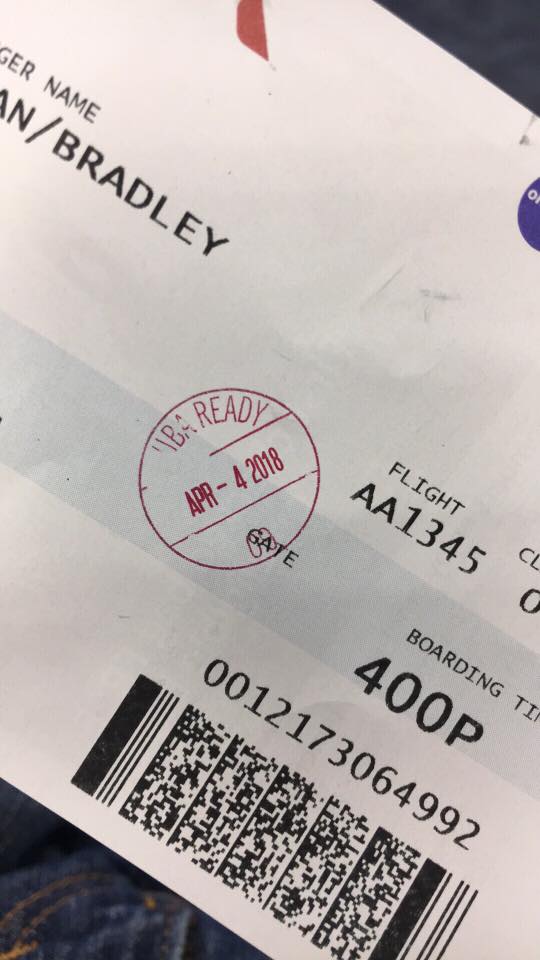 Words and Pictures by Bradley Morgan
Words and Pictures by Bradley Morgan
In April, I took a trip to Cuba. I have some friends who had visited and I consulted with them when I was planning my trip. They told me about all the fun they had and gave me recommendations on how to make the most of the trip. Going to Cuba just sounded so exciting and carried a certain level of danger, intrigue, and sex appeal because it is such a taboo for Americans. This trip, for me, would be an opportunity to further understand my identity as an American and my relationship with a world unknown to most Americans.
It is very easy to travel to Cuba. You can fly directly from the United States (I flew out of Miami) and obtaining a tourist visa is as easy as entering your credit card information on a travel site. A visa is obtained by making a specific declaration of your intended visit whether it is for education, to visit family, journalism, or whatever else. What declaration you make in this process determines what is legal and illegal for you. For me, my declaration was to support the Cuban people. This meant that I had to spend at least six hours a day going to places and doing things that benefited the people and not the government. This meant not staying in hotels, going to museums, and not lounging at the beach all day.
There are challenges you must be aware of though. The embargo is still in effect and you cannot access ATMs in Cuba, so you must bring all the cash you’ll need and then some. The tap water isn’t drinkable, so you’ll have to take steps to ensure you won’t dehydrate. Internet is rare and you won’t have cellular service, so don’t expect to rely on you Google maps app all time. You’re going to a country that stands on the border of being a second or third world nation. When you go to Cuba, you go back in time.
I was eager to take a trip soon because I wanted to learn and experience Cuba as much as I could. Since the country is restricted to many Americans, I wanted to see how things were for myself and determine if what I had been led to believe over the years had any truth in it. I wanted to fully immerse myself in the experience. I pledged to stay completely off the grid and not seek out Internet so as to focus on the country. I wanted to see the city of Havana as well as get into the agricultural heartland of the country. I wanted to meet and engage with the Cuban people to get their views on America and to learn how they lived under Communism. Though you can fly to Cuba in under an hour, it is a country that feels so remote and distant. Cuba ticked every box of mine needed to fulfill a sense of adventure.
Cuba has been a source of curiosity for me for some time. In the 6th grade, I did a rather huge report on the country. In college, as a film major, I studied the Russian film Soy Cuba and analyzed its role as a propaganda piece within the first decade of the Cuban Revolution. And, recently, I read Before Night Falls, Reinaldo Arenas’ memoir as a Cuban exile because of his political views and homosexuality. For a country so close to the United States, it had always carried an air of mystery to me I found alluring.
I have flown a lot during my lifetime, but I haven’t experienced a flight as mesmerizing and tranquil as my flight from Miami to Havana. The sky was clear and the air was warm and inviting. It was snowing when I left Chicago, so this change of scenery was quite welcoming. From the vantage of my window seat, I’m looking at the azure water below and it is so clear that I can see defined shifts in the ocean floor as comfortable blue hues transition into something darker and beckons exploration. Freckling the water were the tiny islands that make up the Florida Keys. I had never visited the Keys before, but I found them fascinating from the air.
A single road connected islands that could only hold a single neighborhood and continued one after another with this lonely stretch of pavement as their only connection to the mainland. I wondered about the people who live on these islands and what their lives must be like. As the road inched deeper into the Caribbean, I couldn’t help but think about one’s motivation for living in such a place supported by such peculiar infrastructure. Could it be that they desired to still be in the United States, but be as far removed from the contiguous part of the country as possible? I know what it is like to live in America, but feel as though you are completely removed from what most would consider the real America that you can’t help but think that you could be in a different country. After all, I did live in Alaska for several years. And Alaska is so geographically removed that it feels like its own culture; one misunderstood by those in America’s wheat field heartlands. I wondered if the people living at the end of the Florida Keys felt the same way but, you know, were much warmer.
The flight to Havana from Miami is so short that you’re surprised to see the island at all. You just received your in-flight refreshment and by the time you take your first sip, you see a lush green appear over the horizon. Flying over the country on your way to the airport is the first time you get a true sense that you’re in a place very different. Looking out my window, I observed seemingly endless farmlands that stretch over the horizon. Houses so far away from each other and large controlled fires burning who knows what. The plane continues the descent and you’re still seeing endless farms. Just when you think you’re going to land on someone’s cow, you hit the runway and you’re officially on the ground in Cuba.

José Martí International Airport is a wonderfully bizarre and angular building. It is a deep gray, jarring, and doesn’t look very welcoming at all. While I am very used to the rigid procedures that one endures when travelling by air, I’ve never seen an airport that so perfectly exhibits such a utilitarian presence. The interior continues this theme with dark greys with mustard yellow signage pointing you in the direction of the immigration desks.
Waiting in line at immigration, I couldn’t stop thinking I shouldn’t be here. I felt like something would happen and I would be returned to the land of Capitalism where I could say I had technically been to Cuba, but for only an hour. I waited patiently as various tourists and nationals approach the immigration desk, have their papers stamped, and stare blankly into a camera that uploads your image into a Cuban database.
Miraculously, or perhaps not since I checked my paperwork multiple times, I had made it through the immigration process and was now officially in Cuba to do whatever I planned on doing. I changed my currency into the CUC (Cuban Convertible Peso and one of their two official currencies) and proceeded to find my hired drive to take me to my casa particulare (bed & breakfast) in Centro Habana.
It was late afternoon and I met my driver, a woman named Marlin. Marlin is not a licensed taxi driver, but I would later find that most are not. While there are official yellow taxis and people who exclusively operate their vehicles as taxis, many Cubans will use their private vehicles to transport people. Very much like Uber but without an app or seatbelts.
The drive from the airport to my casa is about 30 minutes, so I take this opportunity to take the country in and ask Marlin about life in Cuba. We drive pass mango farms, kids playing soccer, crumbling buildings, state propaganda, and even, at one point, a sidewalk fire. Marlin points out various buildings and explains their significance. When we pass the Coliseo de la Ciudad Deportiva, she shares with me that Fidel Castro eliminated all professional sports in Cuba and that complex hosts some local sports and other events. The Rolling Stones played a free concert there in 2016 and became the first British band to play an open-air concert in the country’s history.
Marlin reaches my casa in Centro Habana and the owner is already waiting for me. Her name is Marta and, though elderly and short, emits an air that she doesn’t take any bullshit. She takes me to the apartment I am staying in and gives me a rundown of the facilities and how to use my keys. As part of the check-in process, the casa owner takes your passport and copies the information for state record keeping purposes. As she does so, Marta gives me advice as an American in Cuba which includes how to recognize and avoid various street scams. Marta also asks me if I support Donald Trump. I tell her I don’t and describe him in a naughty word in Spanish. Marta says that’s good because, if I did, I should avoid letting the locals know that. She then slams her fists on the table and says “I don’t know why no one just kill him! I will go kill him!” I kept the straightest face I could, but I was laughing on the inside and thinking Of course! I’m in the country where if they don’t like who is in charge, they just kill them. This kicked off my week in Cuba.
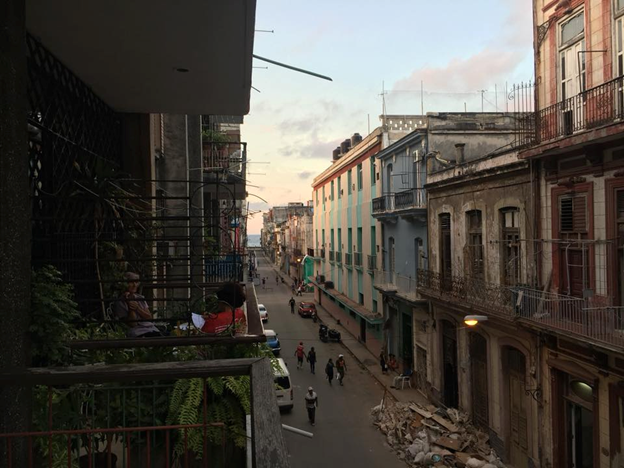
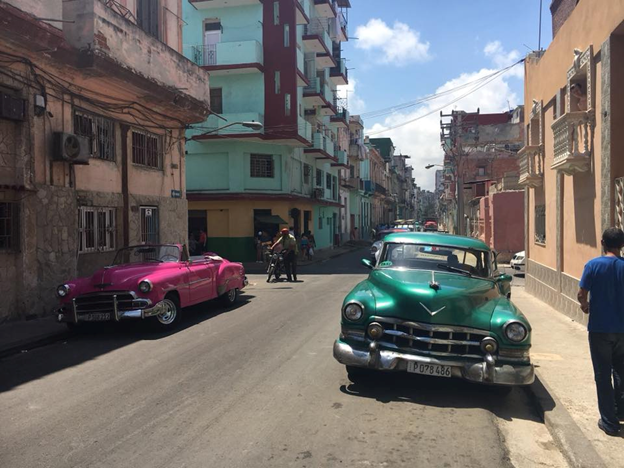

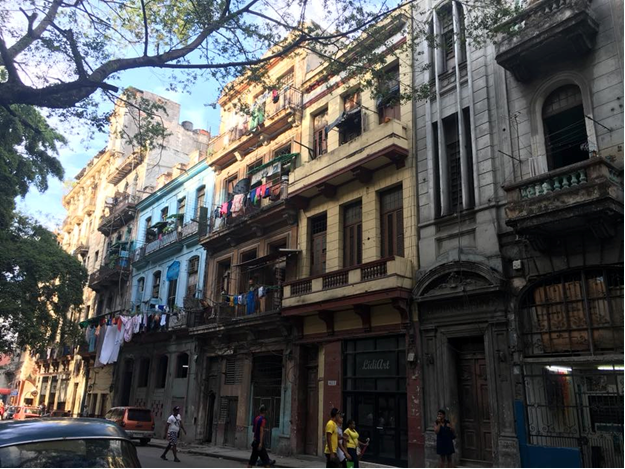
During the week, half of my trip was spent in Havana. While there were taxis everywhere, I chose to walk around as much as possible and observe what I could of the city’s culture. Centro Habana (Central Havana), where I was staying, is the center part of the city. The other areas are La Habana Vieja (Old Havana), the eastern part of the city where the tourists and monuments are, and Vedado, west of Centro Habana and contains the Universidad de la Habana and nicer homes. Compared to areas on either side of it, Centro Habana is where you come face to face with the city’s most apparent infrastructure and poverty issues. While it is a beautiful area in its own right and very rich in culture, you can see the neglect and effects from lack of resources. The buildings in Centro Habana are crumbling and fading away from a former beauty they must’ve exhibited in the 1950s prior to the embargo. Most stores are not lit from the inside and carry a small variety of items. Stray dogs wander everywhere looking for scraps of food. Trash is thrown and piled in the streets. The people wear clothes with American iconography and were obviously donated by previous host families or distributed through some organization. I knew full well that I was going into a Communist country with a history of poverty. So, none of this came as a surprise. However, being aware of those conditions and seeing them firsthand are quite different experiences. Witnessing this was important for me. Being in this environment and living there temporarily was integral to the overall learning experience of visiting Cuba.
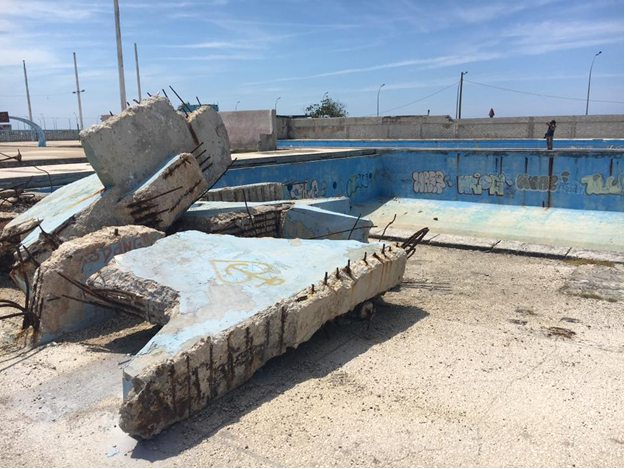

I spent a lot of time in all three neighborhoods. La Habana Vieja contains the city’s most beautiful buildings which, sadly, aren’t that many. El Capitolio, the National Capitol Building, is the nicest building in Cuba. With its cupola and broad wings, it closely resembles the United State’s own Capitol building. I loved looking at this building. However, with the juxtaposition of its opulence compared with the city around it, the disparity is impossible to ignore. Unfortunately, I chose not to tour this building. Given that this was a government building, I felt as though paying money to tour it violated by declaration that I was there to support the Cuban people; a condition of my visa.
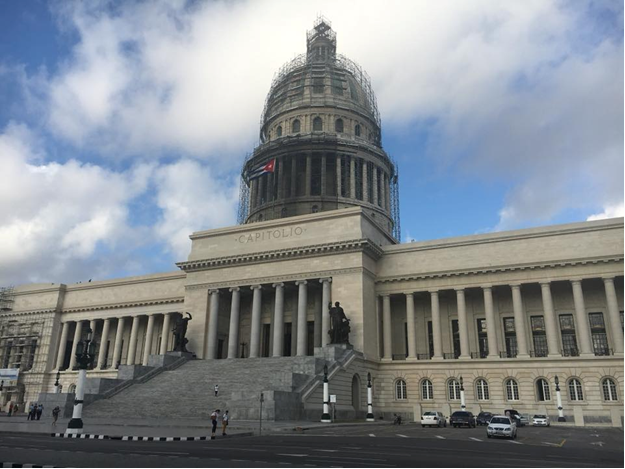
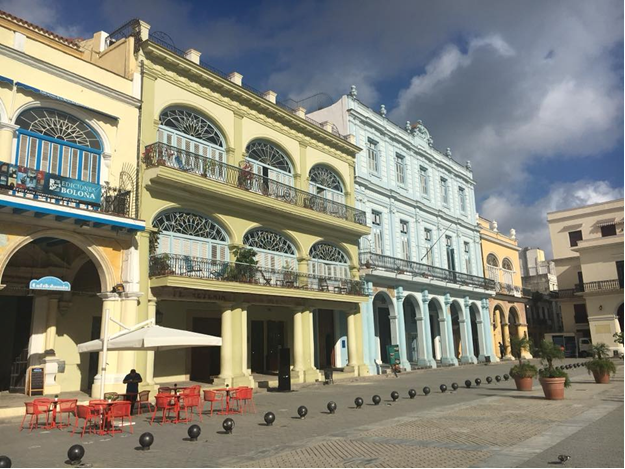
La Habana Vieja is a wonderful area to go to experience Cuba’s history. The plazas in this part of Havana contain so many interesting stories. Plaza Vieja (Old Square) opened as a residential space in 1559 where the wealthier citizens would gaze down from their balconies upon fiestas, bullfights, political demonstrations, and executions. Plaza de Armas (Square of Arms), developed in the 1520s, contains Castillo de la Real Fuerza, a fortress for military exercises, secondhand book markets, palm gardens, and statues honoring various military leaders.
Also housed in La Habana Vieja is the Museo de la Revolución (Museum of the Revolution). A visit to this museum was a must for me when planning this trip. The museum is in the former presidential palace where every Cuban president resided from the 1910s until the 1959 Cuban Revolution that overthrew Fulgencio Batista. I found it incredibly amusing that a museum dedicated to the Cuban Revolution would be housed here.
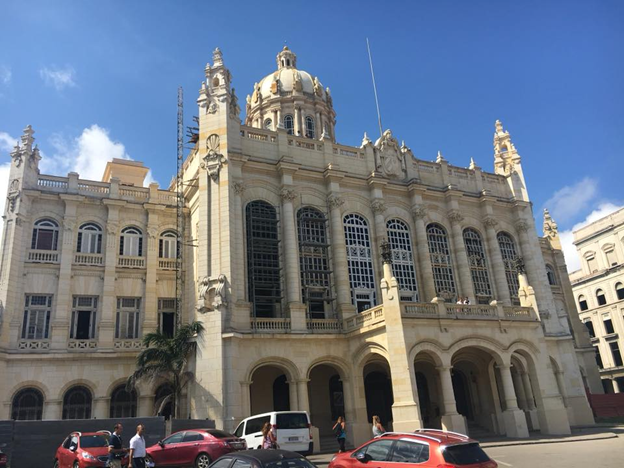


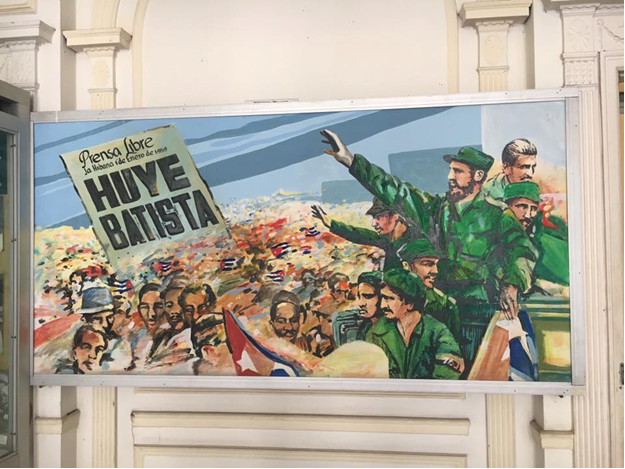
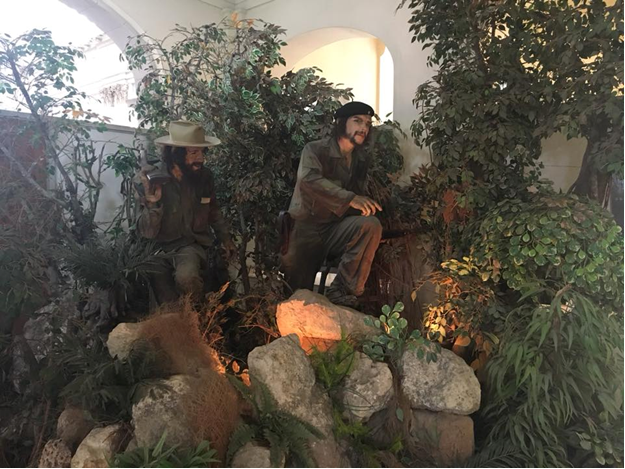
In the museum, you’ll find statues and artwork commemorating Fidel Castro, Ernesto "Che" Guevara, and Camilo Cienfuegos (Curiously enough, you will also find a rather large bust of Abraham Lincoln as he is also a revolutionary liberator). The museum highlights their accomplishments and details the history of the Cuban Revolution and the figures who were instrumental to its success. In the last wing, you’ll find a more detailed history of post-revolution Cuba and this is where you see the most peculiar propaganda in the eyes of an American. This exhibit highlighted the accomplishments and struggles of post-revolution Cuba and how they overcame constant assaults from John F. Kennedy and the CIA. This part of the museum had no issue with vilifying one of the most beloved and charismatic American presidents of the 20th century.
Cuba has an incredibly rich history, but part of the reason why it is so misunderstood is because of America’s relationship with the Communist nation since 1959. Under the embargo, there are consequences beyond not being able to travel completely legally or bring back a ton of cigars. The embargo also impacts access to information as well. It would be naïve of me to believe that everything the American government has told me about Cuba was absolute truth. And I cannot believe that everything I’m seeing in this Cuban museum isn’t just propaganda. All I know is that it does an absolute disservice to both nations to intentionally mislead their citizens with political dogmatism to the point of outright hostility.
I got to experience this hostility both firsthand and from a historical perspective in Cuba. The United States Embassy is in Vedado and along the Malecon, an oceanside highway and seawall. On the walk to the embassy, I passed by a peculiar structure that looked like a large plaza with a stage and flanked by dozens of flagpoles that were erected too close to each other. This area was Tribuna Antiimperialista José Martí (The José Martí Anti-Imperialist Platform). Built in 2000, this area was a public event space across the street from the United States embassy where Cubans could hold anti-American and anti-Imperialist demonstrations. The first demonstration held there was a large protest over the custody of Elián González. Curiously enough, the space, in 2005, also hosted a concert by Audioslave thus allowing them to be the first American band to perform on Cuban soil.
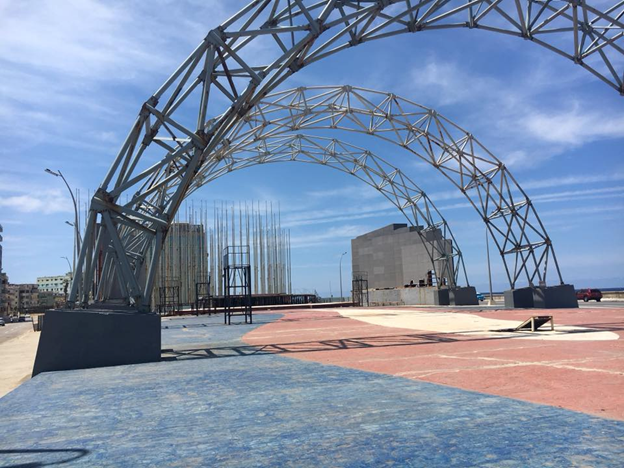
In between the stage and the embassy are the flag poles. 138 in total. In 2006, the United States embassy erected a giant electronic message ticker that would display pro-American viewpoints. The flagpoles were erected to block the messages from the vantage point of those on the plaza. The flags were black with a white star in the center. The number of flagpoles and the design of the flags were to memorialize the Cuban victims of terrorism at the hands of the United States government. In recent years, the electronic ticker and flags have been taken down.
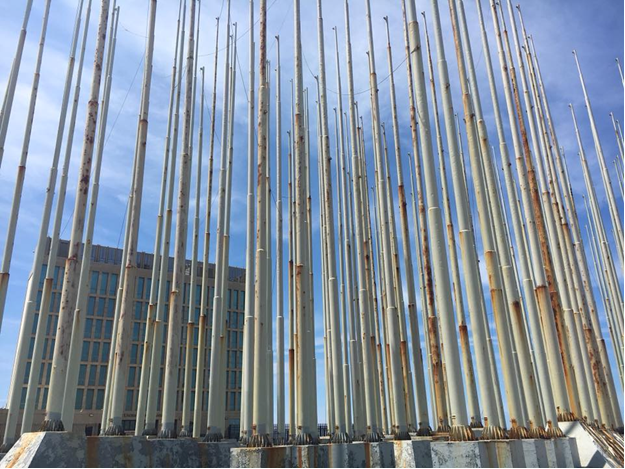
Walking through this plaza, I was amazed by how dilapidated it was. It looked like it hadn’t been used in decades let alone hosting a rock band 13 years ago. It was amazing to me how something with as much political, historical, and cultural importance as this plaza could be left to decay and become a modern ruin. Since the flags have been taken down, I could see the embassy through the flagpoles and ventured across the street. The embassy is an ugly, non-descript building surrounded by a high black fence. It feels cold and sterile and very much like a stereotypical government institution. The guard at the entrance, a Cuban man, asked me what I needed. I mentioned that I was an American and I was interested in the embassy. He asked me what I needed and I just said I wanted to look around. He became irritated and asked me if anything was wrong and I told him no. I was asked to leave the area immediately. I got the impression that unless I was seriously injured, I wouldn’t be welcomed into my own country’s embassy. I don’t know how an average American gains entry into the U.S. embassy in Cuba, but they probably must be pretty close to death if they are even let in at all.
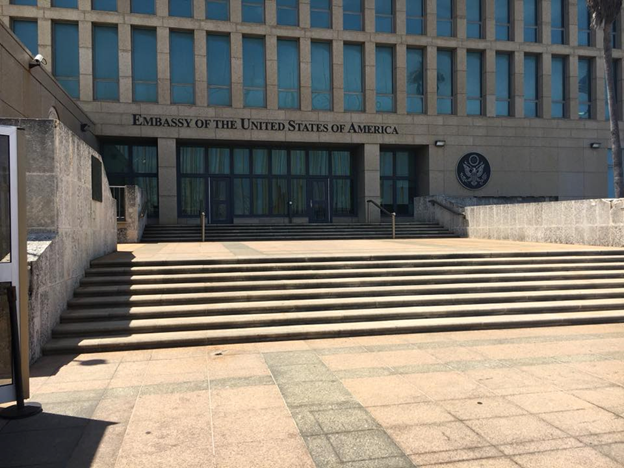
Despite my confrontational encounter with the United States embassy, Cuba is a very hospitable place. A major source of many people’s income and based on hospitality. Take the casa particulare system, for example. Most homes in Cuba have spare rooms for tourists that are rented out for a daily fee. Depending on the level of accommodation, you can stay in a private room with private kitchen and bathroom for not a lot of money. These casa particulares operate in the same way that bed & breakfasts do. In each of the three casas I stayed at during my trip, I find the casa owners to be warm and accommodating. One aspect of their hospitality I enjoyed were the homecooked meals. For about 5 CUC (five American dollars), you can be treated to a large and delicious meal cooked by your casa owner. When in Cuba, I tended to prefer these meals because not only were they cheaper than the restaurants but they were more faithful representations to what actual Cubans eat on their own in their everyday lives. Plus, never had I had better produce in my life.
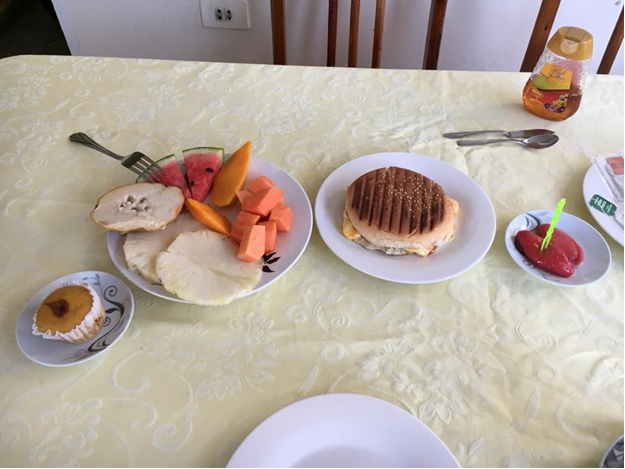
Even if you are not staying in particular casa, you’ll find that many home are open to visitors looking to purchase goods. I bought cigars and tall glasses of cool fruit juice for not a lot of money. All you had to look for was an open door and a sign hanging above it depicting a symbol of an anchor. This openness was really helpful in a lot of circumstances. With Cuba being a poorer country, it is sometimes hard to find things. As a product of Communism, stores, post offices, or other general everyday facilities are scarce and not easily identifiable to foreigners. There were multiple times where I needed a cool drink and rest from the hot sun until I could find a proper bottle of water. Being able to enter a home and pay the equivalent of a dime for some refreshment was needed on several circumstances. And I am grateful for the Cuban people for opening their homes to me.
While La Habana Vieja is a little nicer in terms of infrastructure than the rest of the city, it is not without is problems. Amidst the historical sites I visited, there was still a level of decay and lack of care. One of the sites I was most excited to see when planning my trip was Castillo de los Tres Reyes Magos del Morro (or El Morro for short). I had visited El Morro in San Juan multiple times when I lived in Puerto Rico in the mid-1990s. So, twenty years later, I was excited to see a place that would feel somewhat nostalgic for me in a country lost in time.


Once I arrived at El Morro, I was very disappointed to find trash everywhere. And not just all over the grounds either. Trash was thrown in any and all available alcoves, rooms, and entryways into the castle. Little buildings that would contain cannons and soldiers were filled to the brim with trash. I even saw a man leave his souvenir cart to go urinate on the trash by one of the doors. I remained optimistic and walked the grounds a bit. However, I would find that if I didn’t encounter trash then it was graffiti. So much graffiti. I couldn’t believe the neglect I was seeing at such a historical monument. Granted, I had seen some degradation at multiple historical sites, but they weren’t as old and symbolic as El Morro. I sat on a wall and leaned back thinking about the country’s resources. To my left, the sea was gently crashing against the wall. To my right, the word “cunt” was spelled out in bowling ball-sized rocks on the grounds. I mean, I knew the country was poor. However, I thought the state would at least take more considerable care in their historical and tourist sites. El Capitolio is a gorgeous building and I saw scaffolding that morning where men were working on restorations. This was a lesson in government priorities in the country.
Havana has its problems, but surely it cannot be indicative of the entire country, right? Half my trip would be spent in Havana while I would escape into the country for the other half. It was recommended to me that I should visit Viñales Valley during my trip. Viñales, I would find in my research, was quite a big tourist destination despite being such a quiet place. It is a small town surrounded by farms and mountains. It is a perfect destination for those looking for tranquility.

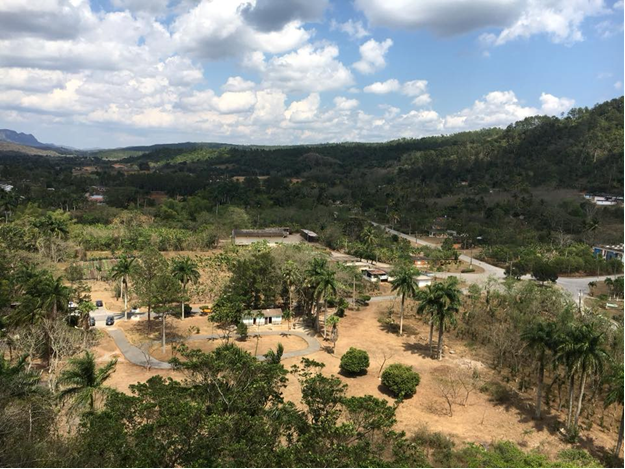
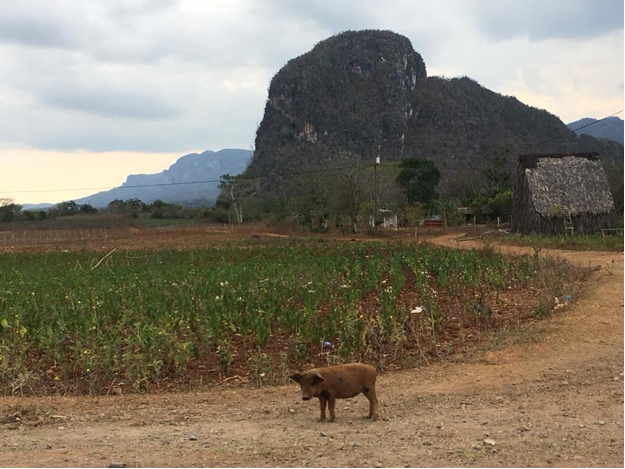

To get there, I took the Viazul bus which is Cuba’s version of America’s very own Greyhound. Despite Cuba being famous for having a lot of old cars, the Viazul bus is modern, comfortable, and equipped with air conditioning. I take the Greyhound every few months in America, so the experience on Viazul was not unknown to me. It was uneventful and efficient. However, it is not the only way to travel for tourists. While I chose Viazul, there are two other ways for visitors to get around the country. The first is a private car. Whether rented or chartered in a taxi, this method is the fastest, but most expensive way, to get around Cuba. If you’re not looking to interact with people during your trip, this would be the way to go. The other method is a taxi colectivo which is a much larger taxi but is shared with multiple riders. Imagine road trips in the family station wagon with everyone bunched up together. While considerably less expensive than private transportation, it is a surefire way to make friends. Viazul, which was the cheapest option, was the way to go for me.
To say that Viñales is tranquil is an understatement. While the town’s main drag near the square is bustling with restaurants and merchants, the rest of the town is quiet and relaxing. My casa in Viñales was down a dirt road where I saw chickens crossing (I would see many chickens crossing many roads in Viñales). After the culture shock of an active and busy Havana, this was a welcome change of pace.
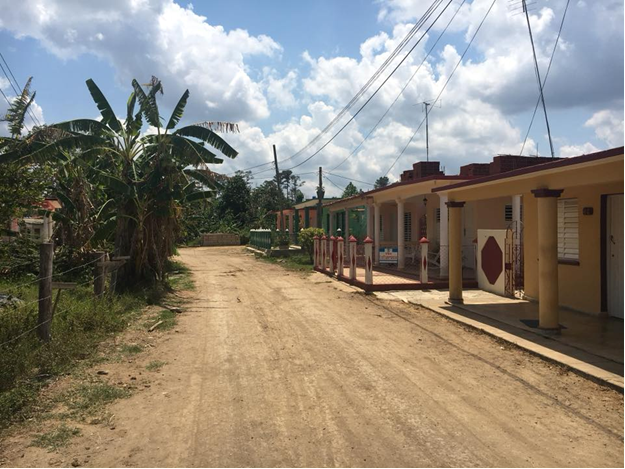
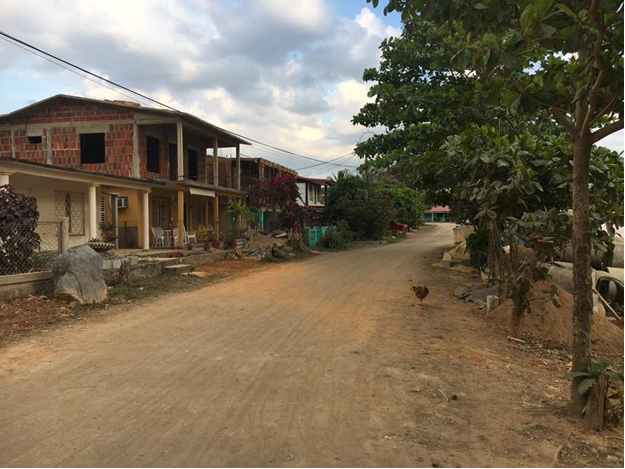
Viñales is a wonderful place to go if you want to see heart of the Cuban people. While there, I got to engage in a variety of outdoor activities that I wouldn’t be able to experience in Havana or even at home in Chicago. I went caving, hiking, toured farms, saw a giant mountainside mural called Mural de la Preshistoria depicting evolution, and went horseback riding. While these activities were fun and relaxing, recreation wasn’t the sole purpose of these activities. I was determined to learn and discover as much as I could about the Cuban people and their culture.
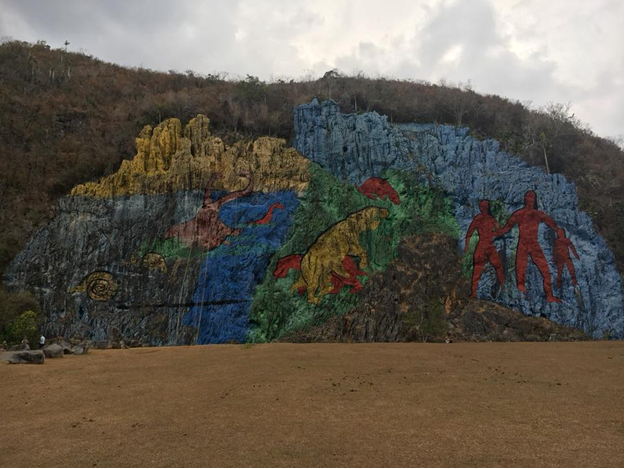
When touring the farms, I spoke with farmers about their agricultural processes and way of life. On one farm, a farmer showed me where he cured tobacco, harvested coffee, grew sugarcane, and rolled cigars. He explained to me that none of the farms in the area used chemicals or additives in their products. They also don’t use gasoline or electrical-powered machinery to harvest their crops. Just men and hand-powered tools. This is as pure and clean as you can get when it comes to what you plow and sow. While there are state-sponsored farms that grow products for mass consumption, there still exists farms that do things the old-fashioned way. I don’t know even know farms in America that boast they don’t use machinery.

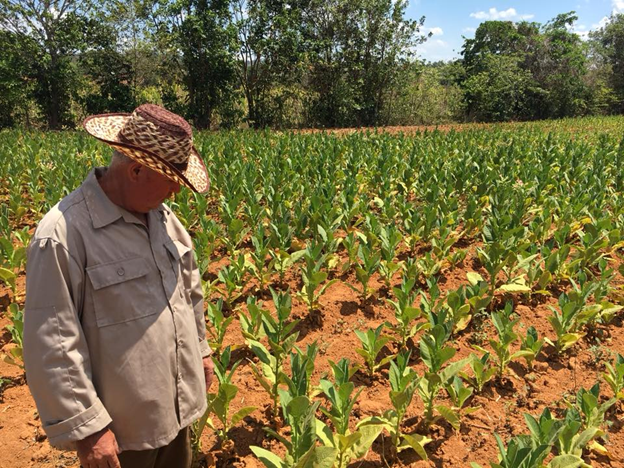


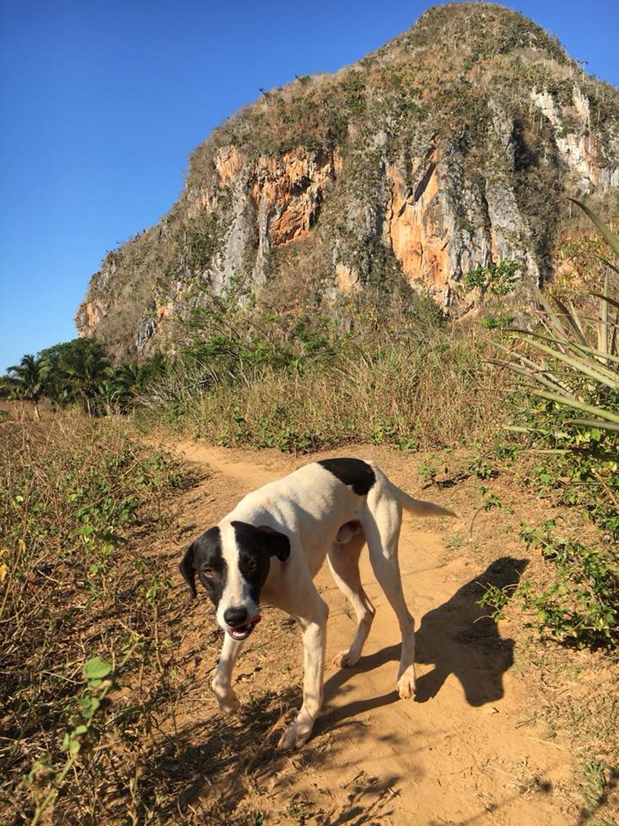
Viñales was a quiet, safe, and calming place. It is also the place where I met the only Americans I would encounter on the trip. In Viñales, I would meet four. The first two were a college student and her mother from Virginia. Their names were Jocelyn and Michelle and they were the only other people on a horseback riding tour I bought. Together, we would ride horses for four hours through Cuban farmlands and countryside.
We talked about our experience in Cuba thus far. Like me, Jocelyn and Michelle had only visited Havana and Viñales and we shared our insights as Americans. For the most part, we agreed on virtually everything. We all believed that Cuba was a beautiful and remarkable country despite its problems and that there was no reason why our government and theirs couldn’t get along. We also talked about some of the concerns we had as Americans before arriving in Cuba. For one, we had worries on just how safe the country would be in general and for Americans. Remember, Cuba is a nation that is mysterious for Americans and vilified by our government. Americans are primed to be critical and dismissive of the country. However, all three of us felt that Cuba was one of the safest countries we’ve ever been to and that is including the United States. Jocelyn and Michelle talked about their experience as women walking down nearly pitch-black Havana streets at night and not worrying about being approached or attacked. They said it just didn’t happen and they felt completely safe. I felt the same way.
Other than being approached by a hustler trying to get me to go to a restaurant where I know I would be overcharged as a gringo, I didn’t fear for my safety. It was quite remarkable how safe I realized Cuba was. It was also interesting that two women, travelling alone, would also come to the same conclusion. It is easy for me to feel relatively safe as a man even though I may be in a foreign country. However, travel for women, especially women travelling alone, can be absolutely dangerous. In the case of these two women, however, they didn’t feel unsafe. I can speculate on why Cuba is such a safe country. Perhaps the country’s prison condition and sentences are quite harsh or it could be a cultural thing as well. It is amazing how peaceful people can be when there aren’t constant mass shootings every other week. America is a country that is so tense that it borders on violence and chaos. Cuba is far more relaxed and doesn’t’ have a history of gun issues. Again, I can only speculate.
Despite the fact that we all felt completely safe in Cuba, the country does have gender issues that are unacceptable in America. Prior to my trip, I had read on a travel blog that Cuban men catcalled but were harmless. This was a very consistent warning to women planning a trip there. Since I am not a woman, I didn’t have to worry about being catcalled, but I did witness it and I did my best to engage with the person and try to understand its pervasiveness in Cuban society.
When I was walking through Havana, I kept hearing this whistle noise. I would hear it at random points in the day and I just couldn’t figure it out. In the afternoon one day, I had to use a cab to get from one side of Havana to the other. As the driver turned a corner, I remember seeing a rather beautiful woman standing on the corner. Then, I heard that whistle noise. I turn to driver and it all made sense. This driver had flipped a switch that would make a mechanical wolf whistle noise and the switch would be flipped whenever he drove by a woman he found attractive. The more cabs I rode in, the more of these whistle switches I would see. And if a driver couldn’t afford a whistle switch, he would just hit the horn twice quickly.
In my conversations with the cab drivers about these whistle switches, I learned more about the prevalence of catcalling and hypermasculinity in Cuba. The cab drivers and I would talk about the differences between American and Cuba women. Or at least the perceived differences. I was asked how men in America meet women and this led to an explanation of apps like Tinder and recent social movements like #MeToo. One driver asked me how one would approach an American woman in a disco and I had to explain to him that women typically didn’t enjoy being approached in American clubs and Tinder or other Internet sites act as a filtration system separating the creeps from men they would actually like to date. These men were just astounded by this and would tell me that Cuban women were more flexible and that it was easier to meet one in a Cuban nightclub.
Having had these conversations, I have come to conclusion that the outlook these Cuban men have are not entirely accurate. I don’t believe that Cuban women tend to be more flexible in fulfilling men’s desires than American women. I believe that such a thought is indicative of a larger disparity in gender issues apparent in Cuba as well as other Latin American countries. Whenever I saw one of these drivers catcall a woman with their car beeps or whistle switches, I didn’t see the women register a reaction. I think they are tolerant because they have to be. I think if that happened to an American woman, they would be quite vocal and confront the cab driver. With one driver, I got the impression that this happened to him before when he said that American and western European women were “stuck up.” While you may not be attacked and the lack of that threat may contribute to one’s viewpoint that Cuba is safer than other places, there is a higher probability of being catcalled.
Safety was a big thing on my mind prior to visiting Cuba, but it wasn’t the only thing I was concerned about. One big part of the American embargo is that I cannot use my debit or credit cards. I cannot even use an ATM in Cuba. So, Americans have to go into the country with all the cash they have. If you happen to run out of money or lose it, then you’re stuck with no way to get access to your finances. This is a was a huge worry for me. I had read on various travel sites the recommended amount of cash to bring for a week. Just in case something unfortunate happened, I brought nearly three times as much. And I’m glad I did because I spent more than what the travel sites advised and the other two Americans I met were not as cautious as me.
The other two Americans I met on the trip were a married couple in their 60s named Beverly and Robert from Maine. Like me, they had just spent the last few days in Viñales and we are all waiting for the same Viazul bus to take us back to Havana. I talked with Beverly about our experiences in Viñales and Havana. Like Jocelyn and Michelle before, Beverly and Robert agreed that they were surprised just how safe Havana was and that there is no reason for the embargo to continue.
Beverly and Robert were spending two weeks in Cuba while I was staying for just one. My trip was almost over, but they were only halfway through and already exhausted. They had told me that they didn’t bring enough money and they were cancelling things on their itinerary so they had money to eat and get to the airport. We talked about various sites and resources we relied on when planning the trip. Beverly and Robert used the same sites as me. According to one site, it recommended $350 per person per week. As mentioned, I brought three times as much just in case of an emergency. Beverly and Robert brought some more than what was recommended, but not by much.
We talked about vacation finances and where exactly your money goes in a place like Cuba. You have food, transportation, activities, currency exchange rates, and souvenirs. Prior to going to Cuba, I was given two pieces of advice when it came to spending money in Cuba: the food is cheap and everything is negotiable. For me, I didn’t choose to negotiate prices for anything in Cuba. If I did, I’m sure I could’ve saved as much as 50% on some things. However, the prices were never outrageous and I felt were fair so I just paid. As for the food, it can be cheap depending on what you get. There is street food in the form of little pizzas or small pasta dishes that you can get for the equivalent of a dollar, but they aren’t filling and cannot sustain someone for a week. More complete meals can be anywhere between the equivalent of $5 to $15. While very delicious and satisfying, you’re not paying much less than you would be if you were in dining in America. So, I found the idea that food was cheaper to be a bit exaggerated. So, this may be why someone could find themselves underfinanced if you followed travel site recommendations rather closely.
While on the bus to Havana, I stopped reading my book and was thinking about Beverly and Robert and their predicament. At this point in my trip, I had more than enough money to mess around with. They were living one of my biggest worries I had prior to the trip. Sure, they weren’t going to starve. However, they had another week in a city that, while culturally rich and exciting to observe and people watch in, isn’t much fun without some money. Even after factoring in money I would need just for the rest of the trip, I still had 300 euros left over.
During the ride back to Havana, I offered 250 euros to Beverly and Robert. They were a little shocked at my offer and I told them to wait to decide until we got to Havana a few hours later. I couldn’t imagine being in their shoes. Again, they would be fine in the end. However, I imagined their disappointment in having to cancel practically half of their trip because our government believes we are pilgrims in an unholy land and, therefore, means we cannot rightfully access our funds.
When the Viazul bus arrives at the station in Havana, Beverly meets me outside. She thanks me for my offer, but declines. I told her that I wish she would take the money because I want them to have a great vacation. Beverly said that they have had many great vacations before and that they’ll continue to have great vacations. I told her that Cuba will change and that this may very well be the only time they’ll be able to enjoy the country before that change. Again, she declined and thanked me. Though she lives in Maine, she was born in Illinois and is always appreciative of the kindness and hospitality of people from the Midwest. We hugged and I wished her well. I hope the rest of their time in Cuba was fantastically memorable.
Music is everywhere in Cuba. I had already seen a lot of music performed in the streets and at restaurants. Mainly, they were a few local guys performing Cuban classics like “Chan Chan” and “El cuarto de Tula” for tips and probably a meal. Watching these musicians playing for the public like that was absolutely fascinating. They were extremely skilled and performed like absolute professionals. It was even more remarkable when you took notice of the quality of their instruments. Many of the performers I saw, especially in Viñales, had instruments that were in desperate need of repair. To see someone play a guitar riddled with holes and without a support strap, but play so skillfully is quite a sight to see. That takes a level of patience and time that I, an American living in a busy metropolis, cannot afford.


Music is an important part of the country’s culture and identity. If you aren’t seeing performers on the streets, you are finding music in other places. In Viñales, I went caving in Cuevas de Santo Tomas. We had a skilled guide who was knowledgeable about the cave and the various rock formations. During the tour, our guide approached a formation on the wall and hit it with his fist. The sound he produced was crisp and clear and resembled a bongo. He hit other parts of the formation and produced various tones. He then opened his palms and rhythmically slapped various parts of the rocks and performed a little musical number. He obviously had a lot of practice from previous tours, but he made a legitimate song that you could dance to. To say that Cuba is a musical country is an understatement because the country literally produces music.
Though Viñales is a small farming community, it is just as musical as the big city of Havana. In addition to hosting a variety of musicians performing at restaurants, the town’s main square hosts salsa dancing throughout the week. I went to the square before the salsa dancing and found that a DJ had already set up. He was playing some modern American hits that were remixed with Cuban flair as well as some Latin hip-hop and dance tracks. While I smoked my cigar and sipped my cerveza, I watched him work the equipment. I was curious about the kind of equipment a Cuban DJ would have. In Havana, I didn’t see many electronics. So, I walked over and checked out his set-up. He looked rather busy, so I didn’t talk with him. However, I saw that he was working with an old PC monitor from the 90s running Windows 98. The screen had that all too familiar discoloration that you see with old monitors; the kind with the little slide wheels to adjust the screen display. And regarding the operating system, I cannot even remember the last time I saw Windows 98 running on a computer. I found it rather amazing that this DJ was doing a great job curating the music for this event relying on technology two decades old. I’m not saying I expected something more modern. I didn’t expect anything really, but I was fascinated with this person finding a way to share music and entertain people.
After getting back to Havana from Viñales, I had only one more night before heading back to the United States. I felt like it was time to check out some Cuban nightclubs to see music. Since I perform in the Old Town School of Folk Music’s Beatles ensemble, one club I had to check out was the Beatles-themed Submarino Amarillo in Vedado (with a statue memorializing John Lennon in the park adjacent to the club). Submarino Amarillo is a really nice club with live music every day with bands that perform music from The Beatles or other pop hits from the 50s through the 90s. The walls feature Beatles-themed artwork and iconography as well as lyrics from some of their most famous songs.
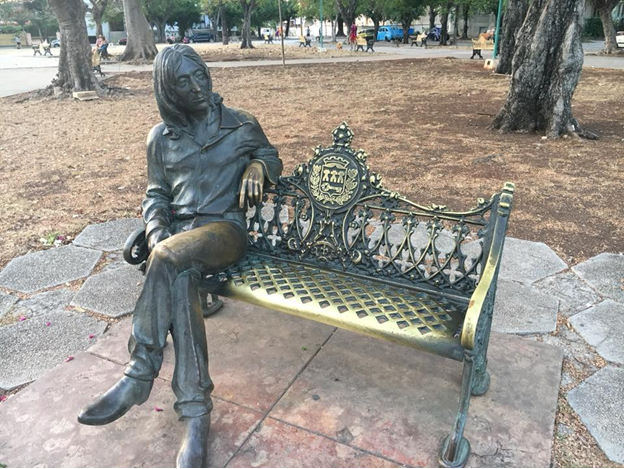
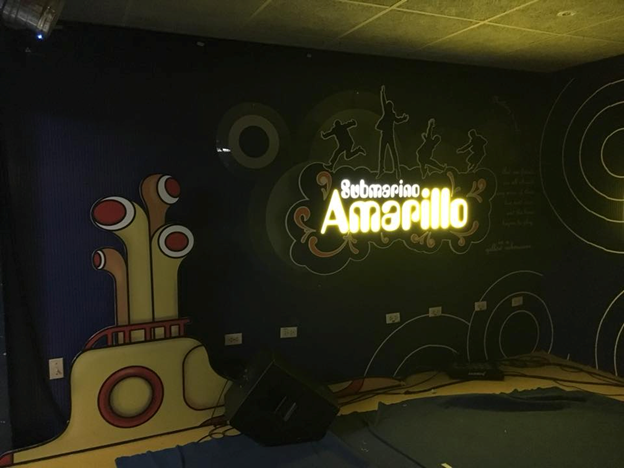
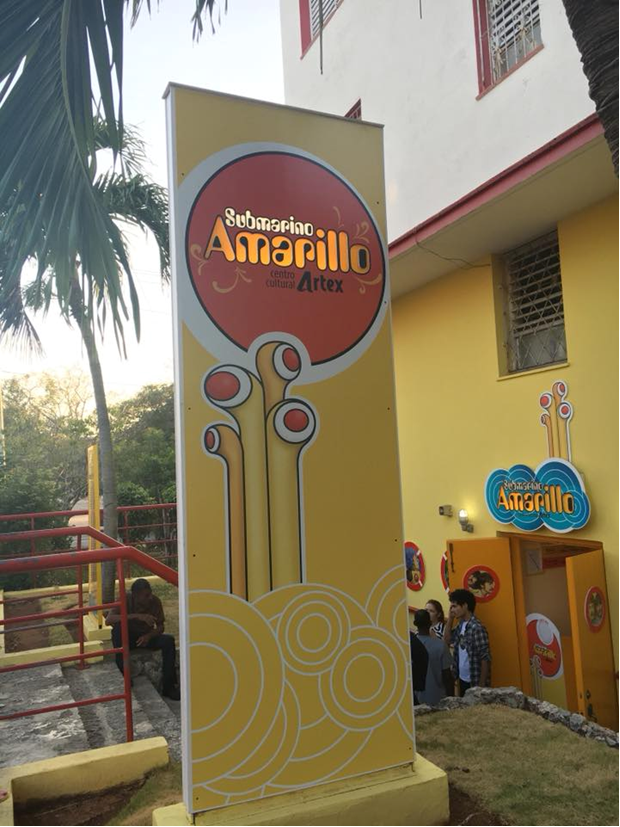
The night I went to Submarino Amarillo, the band performing wasn’t playing Beatles music but rather an assortment of recognizable pop hits. Like the musicians I had seen so far, they were quite excellent and skilled at their craft. However, unlike the other bands, this one was performing the songs in English. Heavily accented English, but they were faithful to the lyrics and were quite clear. I grabbed a beer and watched them perform hits from Bon Jovi, Chic, and KC & the Sunshine Band. The highlight of their set, for me, was their rendition of “What’s Up?” by 4 Non Blondes. When the band leads into one of the more memorable crescendos in the song, I was very amused and impressed by their declaration of “REVOLUCIÓN” because these people truly know the meaning of the word better than Linda Perry.
The Cubans in the club were dancing around and singing along with the music. Even with the embargo in place, music will find a way in Cuba. It is a precious thing to them and you can see their commitment to it. Whether it is the nearly broken guitars, old DJ hardware, or bar singing better than many Americans, it is a culture that truly values their music.
Many Americans take their music for granted in ways they are not conscious of. I know I’m guilty of this. When you have an iPhone in your pocket and a connection to stream media, it becomes too easy to constantly skip through music thus devaluing what you have. This behavior comes from our need of instant gratification and we are fortunate (sometimes) to be able to achieve that whenever we want.
The unintended consequence is that we compromise our relationship with the music because we reduce its worth to us by treating it like a disposable commodity.
When I walked around Havana, I didn’t see many vinyl records. I found a few boxes at a secondhand market in La Habana Vieja, but the condition was quite poor. The records were extremely dirty and the sleeves with moldy and falling apart. This wasn’t because they didn’t take care of their records. These were just old albums in a country where there are just not many albums. So, for many Cubans to buy music, they rely on bootlegs. I saw plenty of people selling mp3 CDs and bootleg music DVDs of various artists and genres. I bought one myself. It is an mp3 CD that contains over 150 rhumba and salsa tracks. Granted, the quality must be quite poor to accommodate so many tracks. But, at 20 CUC ($20), one can expect more for their money. For me, this CD becomes a souvenir of my time in Cuba. For Cubans, this is a way for them to experience music that is otherwise unavailable or extremely hard to find. 20 CUC is a lot of money for the average Cuban, but they get a lot of songs. A lot of songs to listen to as much as they want because that is what they have.
On my flight back to Miami, I had a lot to think about. I came to love Cuba and really enjoyed my trip. It is an absolute jewel of a country. However, it is not without its problems. While much of Havana is gorgeous, there is also a lot of the city that is fading and crumbling. When you look at these dilapidated buildings and streets, you can see various hints of their beauty prior to the embargo. Now, it feels very much like the Soviet Union in the 1980s and that goes beyond all the 1980s Russian cars and trucks I saw driving around. While the Cubans are happy and healthy, they are still poor because of living as second class citizens in their own country for decades under Fidel Castro’s rule. I talked with many Cubans about America’s relationship with their country. And we all agreed that both nations should be friends. Cubans want more Americans to visit and they want the ability to travel to America as well. I know the United States has a stubborn tradition of not supporting non-Democratic nations (one they seem to ignore on occasion), but there is no reason why this embargo should continue.

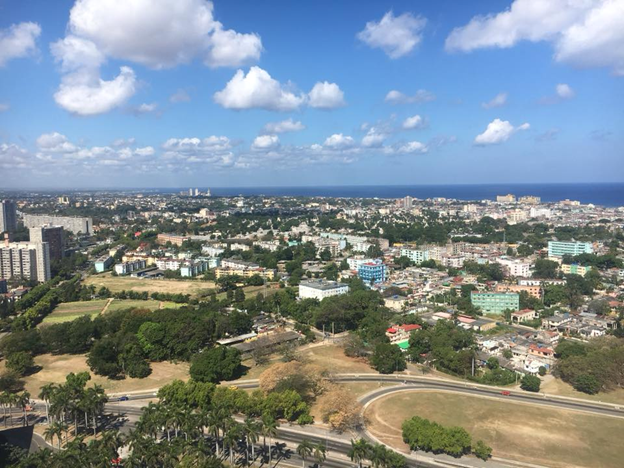


Cuba is a changing country with or without the embargo in place. The Cuba I visited in 2018 will not be the same Cuba in five years. As more tourists from other nations continue to visit and the regime of Fidel Castro continues to fade in the global consciousness, Cuba will slowly limp towards modernization.
Regarding America, I think about how much Cuba will change if the embargo is ever lifted. Prior to my visit, I assumed that the lives of the Cuban people would be enriched from the extra tourism money and the ability to pay for imported goods that don’t travel as far as the current goods available from Europe or Latin America. However, after visiting, I’m not quite sure that would be the case. Cuba is a tourist destination for most of the world and the Cuban people have sources of income based on that (the casa particulares for example). If the United States government allowed their citizens to travel without restrictions and to access money to spend in the country, I don’t think the change in the lives of the Cuban people would be that significant. Sure, they might see something. However, it wouldn’t be much. And I attribute this to the government, its inherent corruption, and commitment to Communism.
Traveling to Cuba opened my eyes to many things. Everything I had been led to believe about the country isn’t true. This is not a country yearning for the freedom that America liberation can bring. This is not a country full of degenerates that are hostile to Americans. This is not a country where people are starving. This is a nation of proud people who have different priorities. This is a nation of people who are highly educated. This is a nation where people are healthy because they have one of the best healthcare systems in the world. Life isn’t perfect there, but it isn’t anywhere else either. And when you consider that, you realize how superfluous and unnecessary a lot of things in life are.
On my taxi ride back to airport, I learned one last nugget of information that I found thought-provoking. Fidel Castro had always been portrayed as a ravenous dictator in the eyes of America. America doesn’t like a dictator (at least one they cannot control). Since 9/11, I have seen seemingly endless footage of Americans either taking down statues of dictators (Saddam Hussein) or threatening war with others (Kim Jong Un). Never, in my lifetime, have I seen anything similar with Fidel Castro. It dawns on me that I didn’t really see anything memorializing Castro. No streets or buildings named after him. No statues, murals, or busts in public spaces.
I asked the cab driver about this. While alive, Castro was a hero to the Cuban people and his face could be seen in homes, in stores, and just about everywhere else. Since his death, his image has quietly faded away. The reason being that the government passed a law prohibiting the naming of institutions and parks or the erecting of statues or busts that honored Castro. This was Castro’s personal wish so the country would progress and not build a cult of personality around his image. Many Cubans were alive to see Castro come into power and stayed with him until his death, so to live in a world without his image everywhere must feel strange. Castro was an incredibly flawed man, but his commitment for Cuba to change without his constant presence doesn’t sound like something a dictator would do. Cuba has changed, Cuba is changing, and Cuba will continue to change. I feel fortunate to have experienced it as an American before the country becomes Americanized.

Next entry: @CHIRPRadio (Week of May 28)
Previous entry: @CHIRPRADIO (Week of May 21)